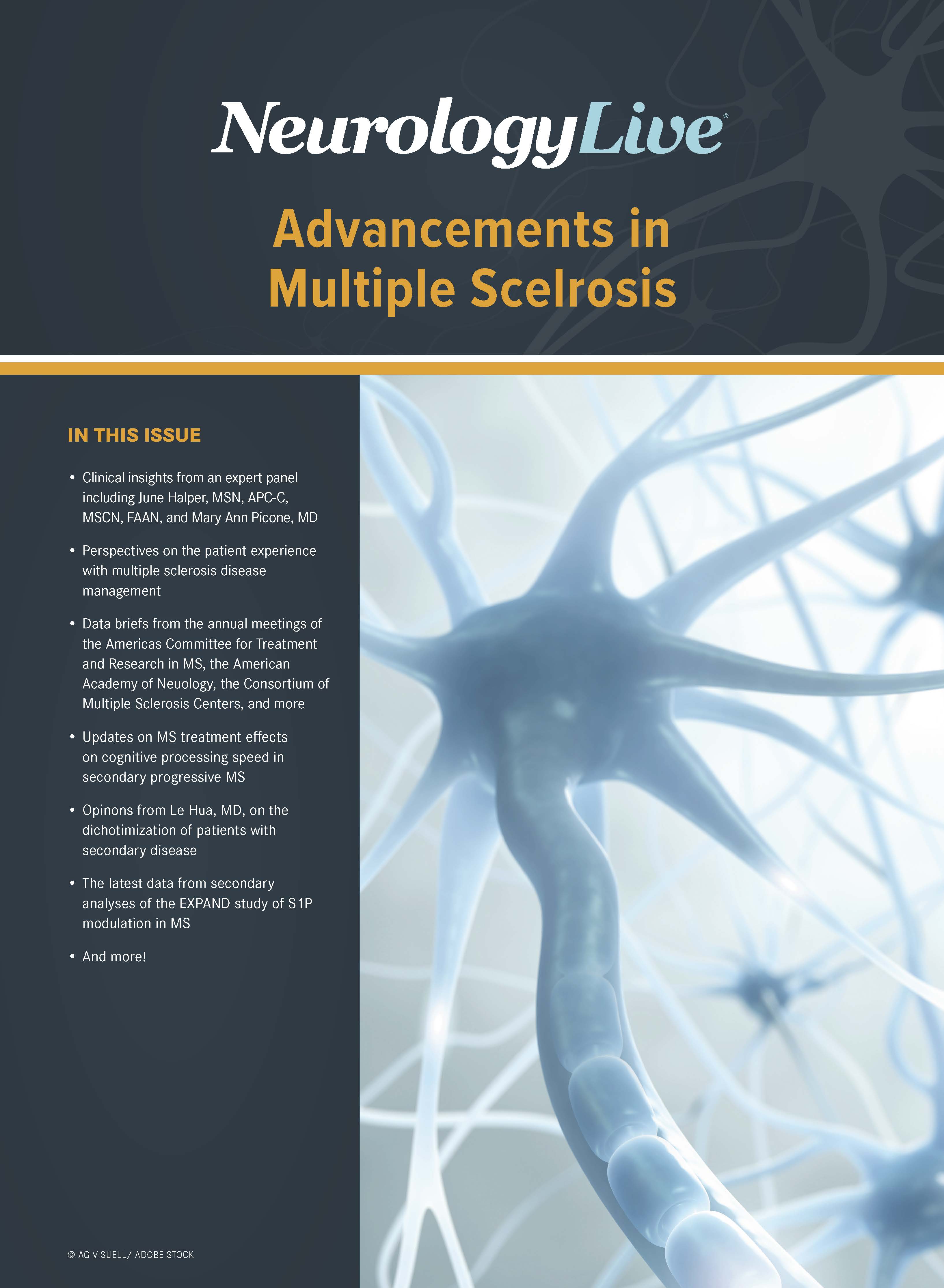Publication
Article
NeurologyLive
Targeting Chronic Inflammation in Progressive MS
Author(s):
Daniel Reich, MD, PhD, senior investigator at the National Institutes of Neurological Disorders and Stroke, spoke about his investigations into the role of microglia in progressive MS.
Daniel Reich, MD, PhD

Two new open-label studies evaluating anakinra (NCT04025554) and tolebrutinib on 7-Tesla magnetic resonance imaging (MRI) paramagnetic rim lesions (PRL) in progressive multiple sclerosis (MS) are currently underway as part of a new phase 2a clinical trial paradigm.1 The studies were virtually presented at the Americas Committee for Treatment and Research in Multiple Sclerosis (ACTRIMS) Forum 2021 by Jemima Akinsanya, DO, Neuroimmunology Clinical Fellow, National Institutes of Health.
Anakinra is a recombinant human interleukin-1 receptor antagonist that was approved by the FDA for the treatment of rheumatoid arthritis and neonatal-onset multisystem inflammatory disease in 2001.2 Tolebrutinib is an investigational, orally available, brain-penetrant Bruton’s tyrosine kinase (BTK) inhibitor.
NeurologyLive spoke with senior author Daniel Reich, MD, PhD, senior investigator, National Institutes of Neurological Disorders and Stroke, to learn more about the unique mechanisms of anakinra and tolebrutinib. He discussed future studies he would like to see conducted with the treatments.
NeurologyLive: Could you provide some background on tolebrutinib and anakinra?
Daniel Reich, MD, PhD: The big unmet need, from a clinical point of view, is to address progressive MS, for which we don't really have great therapeutic options. A lot of people are working hard to try to understand the mechanisms that drive progressive MS. One of the mechanisms that seems to really be important is chronic inflammation that never really resolves in the brain—we know we can stop the acute inflammation with now around 20 disease-modifying therapies. The chronic inflammation is driven probably both by lymphocytes, T and B cells, which really drive the acute inflammation, but also by the innate immune cells, and particularly the innate immune cells of the brain microglia. So, we've been thinking about which therapies might modulate the activation of those cells, and the mechanisms they use to damage brain tissue.
Anakinra is a soluble recombinant antagonist of the IL-1 receptor. IL-1 is a cytokine that's heavily involved in innate inflammation, and that we know is present in these areas of chronic inflammation in the MS brain. Anakinra has never, to our knowledge, been trialed in MS, and it can, unlike some of the antibodies against the IL-1 receptor, get into the brain. Tolebrutinib, on the other hand, is an investigational, unapproved drug. It's an inhibitor of Bruton tyrosine kinase (BTK) for which there are approved drugs. But tolebrutinib is able to enter the brain, and again, BTK is involved not just in signaling mechanisms within B cells, but also in innate immune cells like microglia and macrophages. So, this may have a double hit that it works both on acute and chronic inflammation. That's the thinking behind the choice of these 2 drugs.
What further research are you working on or would you like to see conducted?
The field has gotten so good at finding new therapies to block new relapses. But we are in our infancy in finding these kinds of treatments, and particularly in small, efficient trial designs that can be done like the ones we are trying to do. So, I'd like to see more research into trial design. And then there's deeper research into the biology. I'm particularly excited about some of the new tools in the genomic space for understanding cellular and molecular pathology and relating that to the imaging. One of the big efforts in our lab is to really go in and try to understand the cellular diversity. That is, the dozens of different kinds of cells present in in these lesions—and we're beginning to unravel that. That work is turning up new targets that we didn't necessarily expect, and we may find that some of those molecular targets might be amenable to treatment with repurposed medications that we know very well. Anakinra is an example of that, although it's injectable. There may be other targets that play unexpected roles in these lesions or maybe we will find molecular and cellular targets that are shared between MS and other neurological or non-neurological diseases.
There's tremendous interest now in the immune and inflammatory component of Alzheimer disease (AD). I think with the uncertain results of the anti-amyloid therapies, people are really turning their attention to the role that microglia play well. Microglia are exactly the cells that are activated and proliferated at the edge of these chronic active lesions. We already know that some of the proteins that are turned up in the microglia in AD are the same ones that are turned up in the inflammatory MS lesions. I see a sense of shared purpose here that will allow us to transcend our little categories [and saying] “I work on MS and they work on AD.” No, we have to really understand the ways in which brain tissue could be damaged. There probably aren’t an infinite number of ways, and they're probably shared across diseases. I think it's a tremendously exciting time to be able to open up this field and for new researchers at the beginning of their career to go into this. I think there's a lot we're going to learn in the next few years.
Transcript edited for clarity. For more coverage of ACTRIMS Forum 2021, click here.
REFERENCES
1. Akinsanya J, Absinta M, Dargah-zade N, et al. Toward the use of paramagnetic rim lesions in proof-of-concept clinical trials for treating chronic inflammation in multiple sclerosis. Presented at ACTRIMS Annual Forum; February 25-27, 2021. Poster P126.
2. Kineret® (anakinra) for injection, for subcutaneous use. FDA. 2012. https://www.accessdata.fda.gov/drugsatfda_docs/label/2012/103950s5136lbl.pdf

Newsletter
Keep your finger on the pulse of neurology—subscribe to NeurologyLive for expert interviews, new data, and breakthrough treatment updates.





